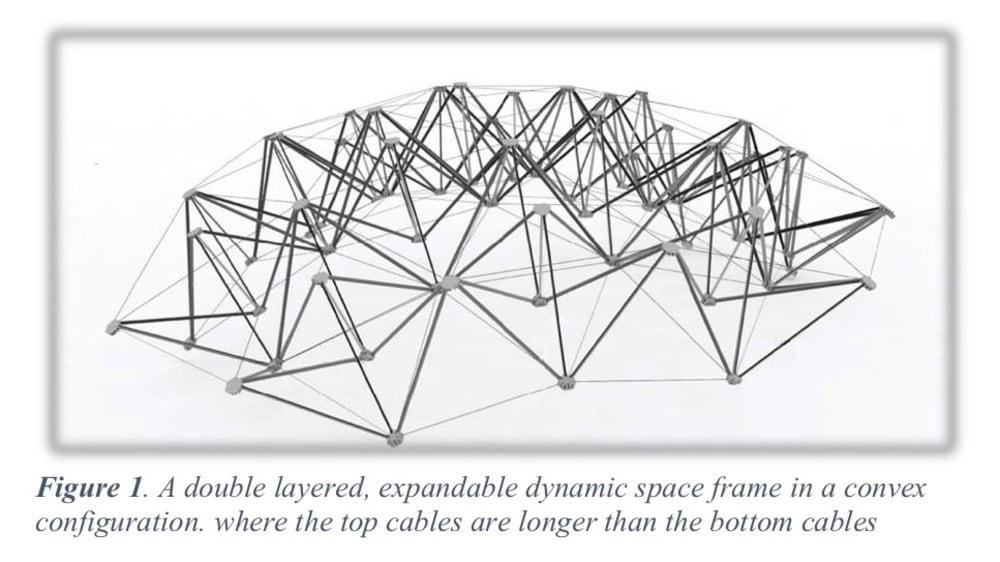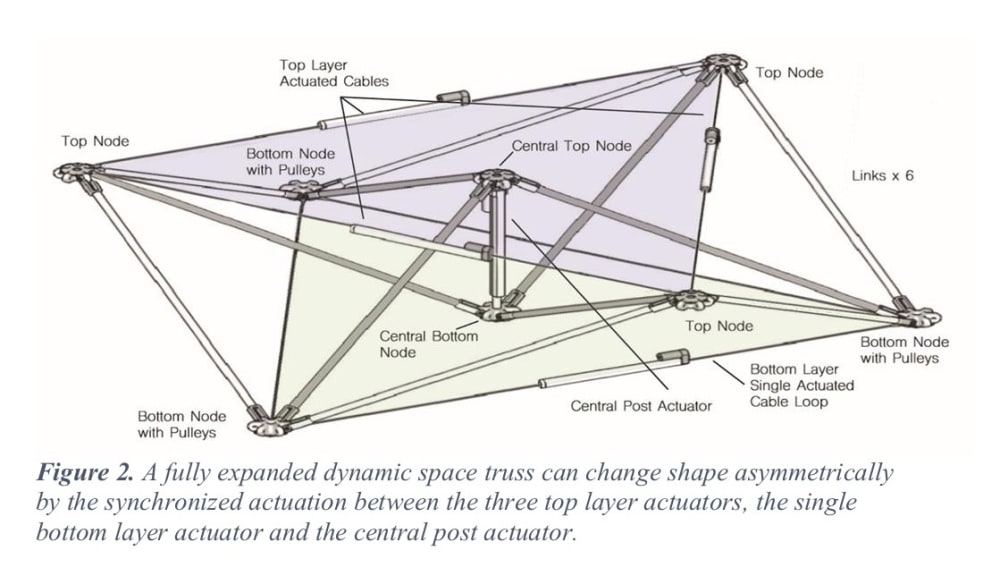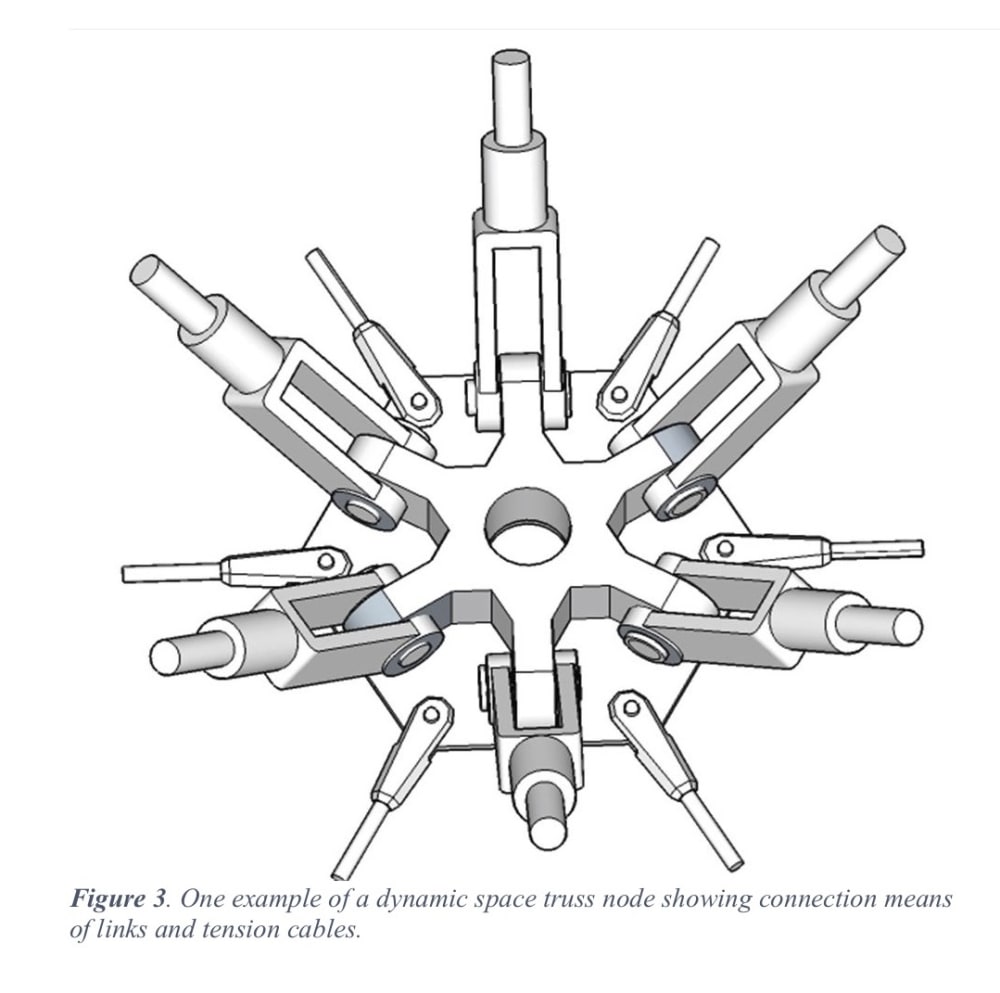Our design idea solves the problem of providing a means to construct a double layered, expandable dynamic spaceframe, which can transform from one freeform to another, whilst remaining rigid and load bearing throughout its transformation. It takes up little space when folded but can then be expanded to cover a large area or occupy a large space. (See Fig1)
The benefits of introducing this dynamic truss geometry to artists, engineers, architects, and scientists will be:
- The spawning of new innovative applications from nanoscale to macroscale.
- The advancement of space engineering.
- The revival of responsive architecture which will benefit both society and the economy.
- The use of lightweight, strong, and highly recyclable, aluminum products will lower energy costs and carbon emissions whilst reducing the consumption of natural resources.
The dynamic spaceframe (See Fig 1) consists of a plurality of conjoined, foldable, actuated, dynamic space trusses.
The dynamic space truss (See Fig 2) comprising of three top nodes (See Fig 3) and three opposed bottom nodes, the nodes being interconnected by links pivotally attached, the arrangement being such that in a folded condition the top nodes are grouped together, and the bottom nodes are grouped together spaced from the top nodes.
Upon movement of the central top node towards the central bottom node, the compression links cause the top three nodes to move outwardly from one another and the bottom three nodes to move outwardly, substantially increasing the size of the dynamic space truss. Actuated cables control the limits of expansion and freeform curvature.
Actuation, when controlled by a computer, should be conceived of as being programmable, and thus providing a means to connect computation to the physical control of the truss.
A fully expanded dynamic space truss can change shape asymmetrically by the synchronized actuation between the three top layer actuators, the single bottom layer actuator and the central post actuator. A continual tension is maintained by computerized control during expansion or contraction of the truss.
As the central post tensioning actuator is shortened, the actuated cables are lengthened, When the central post tensioning actuator is lengthened, the actuated cables are shortened.
There has been no truly efficient solution to this problem to date. There is a huge untapped market for a dynamic spaceframe which can freely morph from a planar surface to an asymmetric surface.
One particularly important application is to provide a dynamic spaceframe in outer space, for example for use as a star occulter, tunable parabolic satellite dish or a shape changing space platform.
In addition, the design can be applied to responsive architecture, dynamic building facades, double layered folding dome structures, temporary shelters, scaffolding and morphing aircraft wings.
The Spaceframe Market size exceeded USD 554 million in 2019 and will grow at a CAGR of 10.6% from 2020 to 2026.
One method of manufacturing is a straightforward assembly of 3D printed nodes, aluminum alloy links, flexible cables and associated “off the shelf” components.
The production cost compares with similar products in the marketplace.
Video
Like this entry?
-
About the Entrant
- Name:Robert Laxton Burdon
- Type of entry:teamTeam members:David John Hayter
Robert Laxton Burdon - Software used for this entry:Rhino. Grasshopper, Fusion 360
- Patent status:pending








